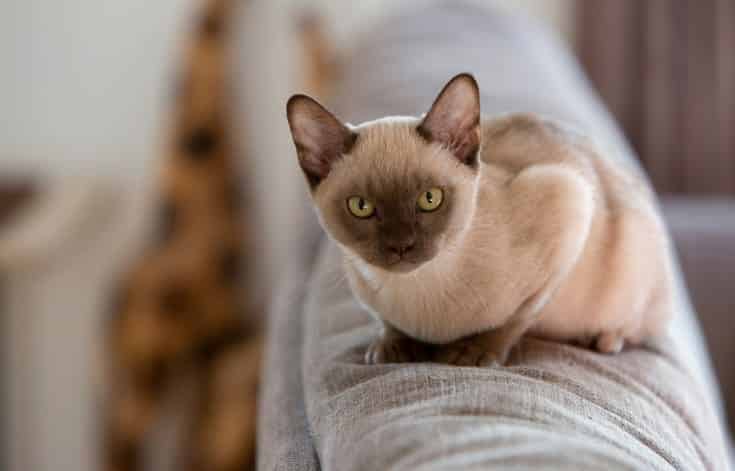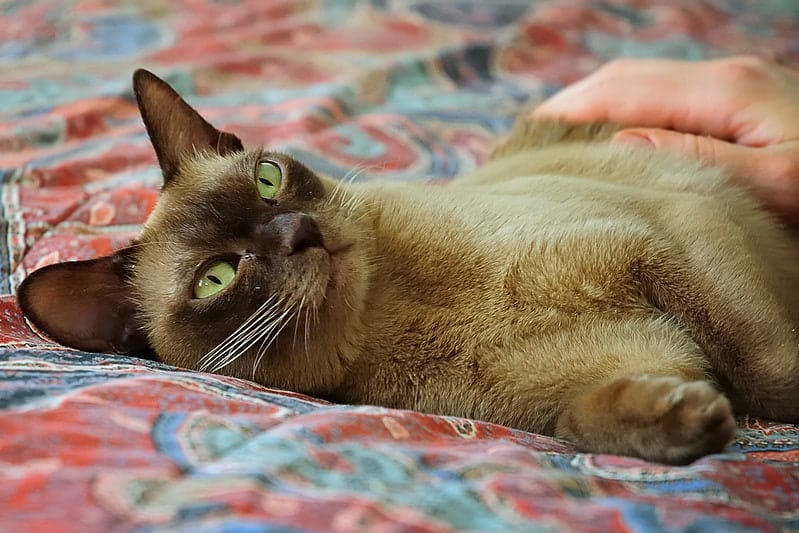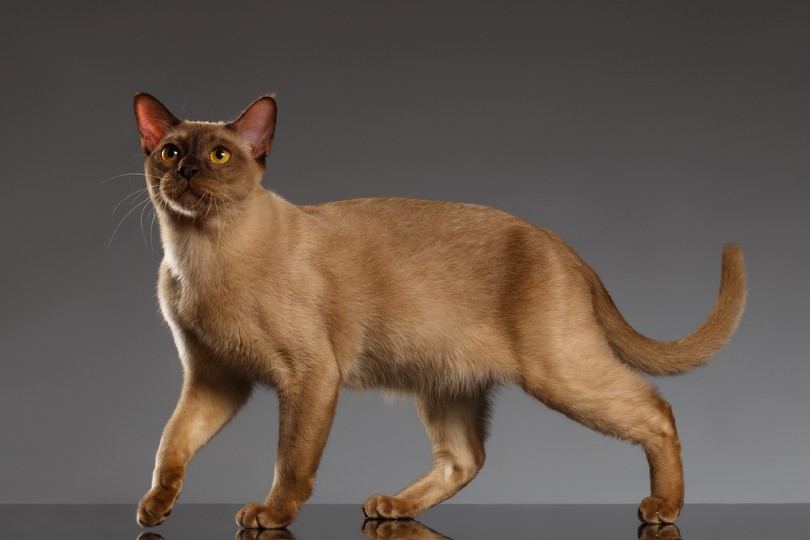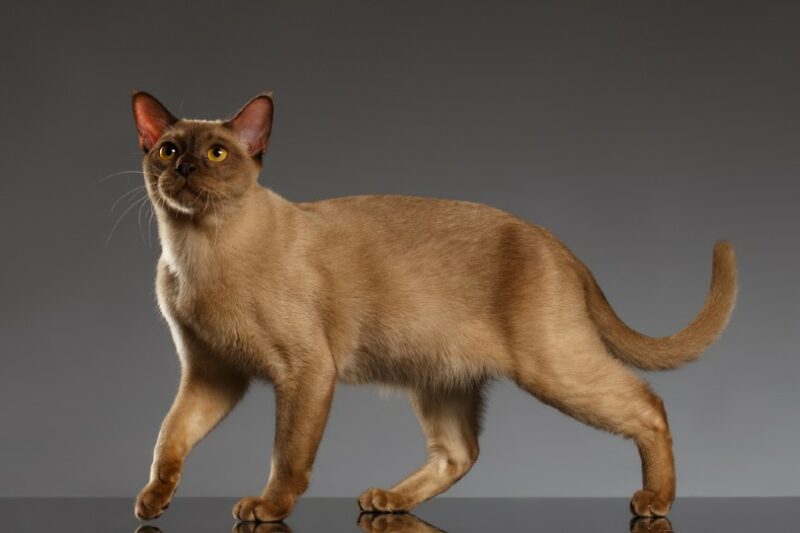Since they’re affectionate, playful, and fiercely loyal, the Burmese cat is very easy to love. If you’re an allergy sufferer but would love to share your life with one of these wonderful cats, you’ll be pleased to learn that the Burmese cat is considered one of the most suitable breeds for allergy sufferers.
In truth, no cat is truly hypoallergenic, and there’s no guarantee—regardless of breed—that you won’t suffer an allergic reaction around them. Read on to find out more.
Are Burmese Cats Good for Allergy Sufferers?

Burmese cats are labeled “hypoallergenic” because they don’t shed as much as other breeds. They are considered a better choice for allergy sufferers than heavy-shedding cats, like the Ragdoll or the Norwegian Forest Cat.
It’s important to bear in mind, however, that just because a cat is labeled “hypoallergenic” does not mean they cannot trigger an allergic reaction. Contrary to popular belief, cat hair is not the culprit behind reactions in allergy sufferers. The proteins in dander—which is dried,1 dead skin—are responsible. These proteins can also be found in urine and saliva.
All cats shed dander to an extent, which is why there’s no cast-iron guarantee that a low-shedding breed won’t be problematic for an allergy sufferer. The only difference in cats labeled “hypoallergenic” is that they give off fewer allergens than “non-hypoallergenic” cats.
Can An Allergy Sufferer Have a Cat?
This depends on how severe your allergies are and if you can effectively manage them. Some allergy sufferers live harmoniously with cats by implementing cleaning routines to reduce dander in their homes. Wiping down surfaces, vacuuming, and washing your cat’s bedding regularly are standard methods of reducing dander.
Some people create cat-free zones in their homes, particularly the bedroom, and some invest in an air purifier with a HEPA (high-efficiency particulate air) filter to remove allergens from the air. These methods may help an allergy sufferer manage their symptoms.
Unfortunately, some cat lovers find their allergies too bothersome for them to live with a cat. That is why it’s crucial to be sure of your decision before bringing a cat home to avoid having to rehome them. You could always try discussing your options with an allergist to determine if sharing your home with a cat is doable.
What Are Burmese Cats Like to Live With?

Burmese cats have been described as almost “dog-like” because they follow their owners around wherever they go. They are typically very loving cats that thrive on being the center of attention. They’re also calm as adults but never lose their kitten-like curiosity and inquisitive streak, and one of their favorite pastimes is perching on a window ledge or cat tree, watching the world go by.
Burmese cats are known for their love of climbing and jumping in particular, so cat trees are a must-have for the sprightly felines. One of the major health issues to watch out for in Burmese cats is obesity.2 Burmese are pretty heavy cats with stocky, muscular bodies.
In addition, they’re known for their love of lounging around and chowing down. This puts them at risk of putting on a few extra pounds than they need. In terms of coat care, Burmese cats are pretty low maintenance.
A once-weekly brushing should be suitable for a Burmese cat, though they’ll likely shed a little more than usual during shedding seasons (spring and fall). It’s also essential to keep their nails trimmed to avoid overgrowth.
Other “Hypoallergenic” Breeds
If you’re an allergy sufferer determined to become a cat parent, here are some other breeds you may be interested in:
Conclusion
To recap, Burmese cats are labeled “hypoallergenic” due to their tendency to shed little, and they are worth considering if you’re an allergy sufferer. However, all cats shed, whether a little or a lot, and there is always the chance of an allergic reaction. You can talk to your doctor about managing your symptoms with medications or allergy shots, and unless you have a severe case, you can hopefully live with the remarkable Burmese cat.
Featured Image Credit: Seregraff, Shutterstock











